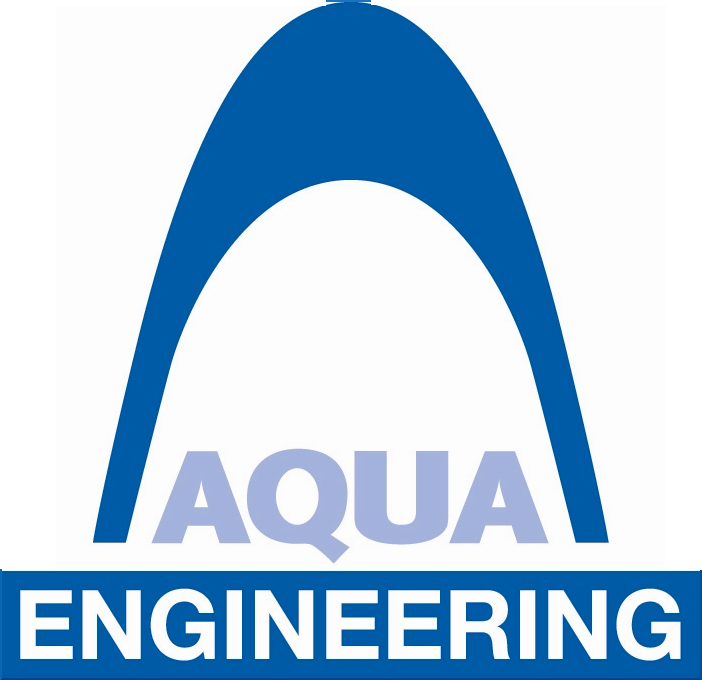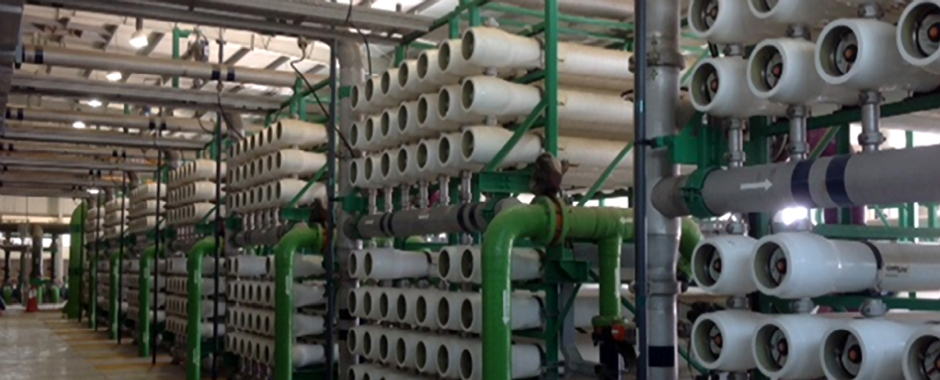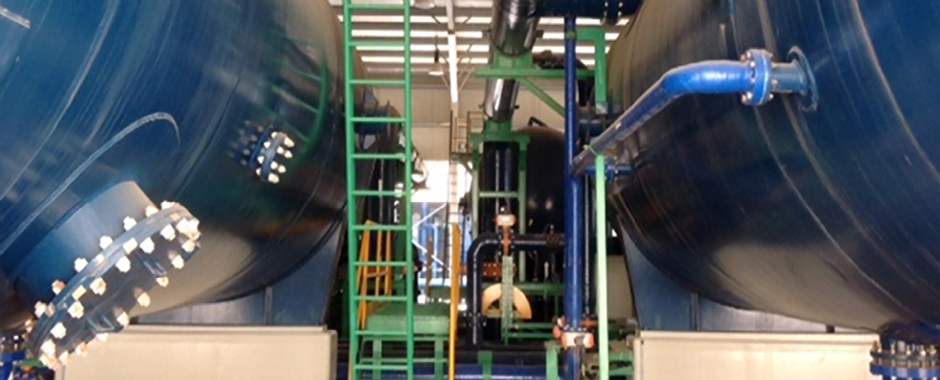At a Glance
Water is one of the most important resources on the Blue Planet Earth. Human life itself is absolutely dependent upon a plentiful, sustainable supply of it. Freshwater is so precious it could be called the “Blue Gold”
Purpose of municipal drinking water systems is purification of available raw water sources through a technological process.
Aqua Engineering offers drinking water plants, applying the latest technology to satisfactorily fulfil any requirements. With our Know- how, we can turn contaminated and heavily polluted water into a healthy foodstuff of any desired quantity and quality.
In the last decades, Aqua Engineering has successfully implemented a significant number of large-scale drinking water treatment plants up to 400.000 m3 per day capacity.
Water purification is the process of removing undesirable chemicals, biological contaminants, suspended solids and gases from contaminated water. The goal is to produce water fit for a specific purpose. Most water is disinfected for human consumption (drinking wate), but water purification may also be designed for a variety of other purposes, including fulfilling the requirements of medical, pharmacological, chemical and industrial applications. The methods used include physical processes such as filtration, sedimentation, and distillation; biological processes such as slow sand filters or biologically active carbon; chemical processes such as flocculation and chlorination and the use of electromagnetic radiation such as ultravoilet light.
Purifying water may reduce the concentration of particulate matter including suspended particles, parasites, bacteria, algea, viruses, fungi, as well as reducing the amount of a range of dissolved and particulate material contained in the raw water source.
Raw water sources may be ground water from wells, surface water from rivers, lakes, dams and canals and have usually variable quality that is also subject to seasonal or weather changes. So treatment processes must be adopted for the particular raw water source and its variations.
The standards for drinking water quality are typically set by governments or by international standards. These standards usually include minimum and maximum concentrations of contaminants, depending on the intended purpose of water use.
Measures taken to ensure water quality not only relate to the treatment of the water, but to its conveyance and distribution after treatment as well. It is therefore common practice to have residual disinfectants in the treated water in order to kill any bacteriological contamination during distribution.
According to a 2007 World Health Organization (WHO) report, 1.1 billion people lack access to an improved drinking water supply, 88 percent of the 4 billion annual cases of diarrheal disease are attributed to unsafe water and inadequate sanitation and hygiene, while 1.8 million people die from diarrheal diseases each year. The WHO estimates that 94 percent of these diarrheal cases are preventable through modifications to the environment, including access to safe water. Simple techniques for treating water at home, such as chlorination, filters, and solar disinfection, and storing it in safe containers could save a huge number of lives each year. Reducing deaths from waterborne diseases is a major public health goal in developing countries.
Sources of water that is good as raw water for a conventional municipal drinking water plant are various and may be from groundwater aquifers, springs, upland lakes and reservoirs (dams and rain water catchment), rivers and canals. Saline ground water or surface brackish and seawater can only be treated by using advanced membrane technology for desalination and is not considered good for conventional treatment methods.
The aims of the treatment are to remove unwanted constituents in the water and to make it safe to drink or fit for a specific purpose in industry or medical applications. Widely varied techniques are available to remove contaminants like fine solids, microorganisms and some dissolved inorganic and organic materials, or environmental persistent pharmaceutical pollutants. The choice of method will depend on the quality of the water being treated, the cost of the treatment process and the quality standards expected of the processed water.
Applied processes shown below are the ones commonly used in water purification plants. Some or most may not be used depending on the scale of the plant and quality of the raw (source) water.
Pre-treatment
-
Pumping and containment – The majority of water must be pumped from its source or directed into pipes or holding tanks. To avoid adding contaminants to the water, this physical infrastructure must be made from appropriate materials and constructed so that accidental contamination does not occur.
-
Screening – The first step in purifying surface water is to remove large debris such as sticks, leaves, rubbish and other large particles, which may interfere with subsequent purification steps. Most deep groundwater however does not need screening before other purification steps.
-
Storage – Water from rivers may also be stored in bankside reservoirs for periods between a few days and many months to allow natural biological purification to take place and provide a buffer against short periods of drought or to allow water supply to be maintained during transitory pollution incidents in the source river.
-
Pre-chlorination – In many plants the incoming water was chlorinated to minimize the growth of fouling organisms on the pipe-work and tanks. Because of the potential adverse quality effects this has largely been discontinued today.
Coagulation and flocculation
One of the first steps in a conventional water purification process is the addition of chemicals to assist in the removal of particles suspended in water. Particles can be inorganic such as clay and silt or organic such as algae, bacteria, viruses, protozoa and natural organic matter. Inorganic and organic particles contribute to the turbidity and colour of water.
Ph adjustment is needed to support chemical processes in water purification and to adjust the pH of treated water. Making the water alkaline helps coagulation and flocculation processes work effectively and also helps to minimize the risk of corrosion in pipes.
Chemicals are mixed with water in a way to allow building of flocs that can be settled downstream in a sedimentation process.
Sedimentation takes place in the sedimentation basin, also called a clarifier or settling basin. It is a large tank with low water velocities, allowing floc to settle to the bottom. The sedimentation basin is best located close to the flocculation basin so the transit between the two processes does not permit settlement or floc break up. Sedimentation basins may be rectangular, where water flows from end to end, or circular where flow is from the centre outward. Inclined flat plates or tubes can be added to traditional sedimentation basins to improve particle removal performance and reduction of footprint.
Sludges from sedimentation need to be removed and further treated and dewatered for landfill or other purpose.
When particles to be removed do not settle out of solution easily, dissolved air flotation (DAF) is often used. Water supplies that are particularly vulnerable to unicellular algae blooms and supplies with low turbidity and high colour often employ DAF. After coagulation and flocculation processes, water flows to DAF tanks where air diffusers on the tank bottom create fine bubbles that attach to floc resulting in a floating mass of concentrated floc. The floating floc blanket is removed from the surface and clarified water is withdrawn from the bottom of the DAF tank.
Filtration is the next step following main particle separation where the water is filtered as the final step to remove remaining suspended particles and unsettled floc. Filtration can be made by the following types of filters:
-
Rapid sand filter – is the most common filter type, where water moves vertically through sand which often has a layer of activated carbon or anthracite coal above the sand. The top layer removes organic compounds, which contribute to taste and odour. The space between sand particles is larger than the smallest suspended particles; so simple filtration is not enough. Most particles pass through surface layers but are trapped in pore spaces or adhere to sand particles. Effective filtration extends into the depth of the filter. Filters are backwashed by reversing the flow by use of clean water and air to remove embedded particles.
Rapid sand filters may be designed as gravity filters or pressure filters.
-
Slow sand filters - may be used where there is sufficient land and space, as the water must be passed very slowly through the filters or if the raw water is subject to heavy organic load. These filters rely on biological treatment processes for their action rather than physical filtration. The filters are carefully constructed using graded layers of sand, with the coarsest sand, along with some gravel, at the bottom and finest sand at the top. Drains at the base convey treated water away for disinfection. Filtration depends on the development of a thin biological layer on the surface of the filter.
-
Membrane filters - are widely used for filtering both drinking water and sewage. For drinking water, membrane filters can remove virtually all particles larger than 0.2 um—including giardia and cryptosporidium. Membrane filters are an effective form of tertiary treatment when it is desired to reuse the water for industry, for limited domestic purposes, or before discharging the water into a river that is used as source for water treatment further downstream.
Ultrafiltration (UF) membranes use polymer membranes with chemically formed microscopic pores that can be used to filter out suspended solids and most organics and acts as positive barrier against bacteria and viruses. Dissolved solids can only be removed by selective ion exchange processes or reverse osmosis.
Disinfection is the final process step and is accomplished both by filtering out harmful microorganisms and also by adding disinfectant chemicals. Water is disinfected to kill anypathogens, which pass through the filters, and to provide a residual dose of disinfectant to kill or inactivate potentially harmful microorganisms in the storage and distribution systems. Possible pathogens include viruses, bacteria, including Salmonella, Cholera, Campylobacter and Shigella, and protozoa, including Giardia lamblia and other cryptosporidia.
Following the introduction of any chemical disinfecting agent, the water is usually held in temporary storage – often called a contact tank or clear well to allow the disinfecting action to complete.


























